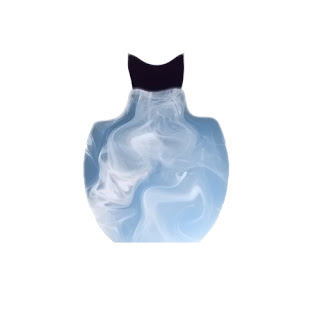This tutorial is designed to show you how to paint a background using the tools that are available in Photoshop, we will be using the Default brushes, Smudge, Dodge and Burn Tool, and from the Filters menu Blur/Motion Blur and Distort/Twirl.
The idea is that you will open a document with a gradient background and then lay down some colours in different layers, the effects you will obtain will come from the use of the above tools. In the next images I will show you some of the effects that you can achieve.
In this first image I have loaded black using the Chalk 63 pixel brush and then used the Dodge tool on the edges.
The idea is that you will open a document with a gradient background and then lay down some colours in different layers, the effects you will obtain will come from the use of the above tools. In the next images I will show you some of the effects that you can achieve.
In the above image the Smudge tool was used on the areas where the Dodge Tool has been applied,with the Smudge Tool you can reshape by pushing areas around.
In the above image a brown jagged line was drawn with the chalk brush and then the Smudge and Burn Tools were used. On a layer below the brown is a white layer. The Blending mode was changed to Colour Burn after the two layers were merged.
Effects can be obtained from using Motion Blur, in this example, the splatter brush was used, then Motion Blur applied and lastly a little Smudging.
When using brushes especially the Chalk brush use different pixel sizes and also play with changing the brush properties, changing the angle to -88 degrees give a jagged top edge.
The different ranges and exposure settings for the Dodge Tool will also give different effects. Also play with the settings for the other tools and filters.
This next section is on how to create a moon although it could be anything in your background.
When creating the moon, choose your size soft brush with 0% hardness and whatever size you desire. In Layer 3 reduce the size of the brush and hardness to 36% and click once in the middle of the previous blue. In the next layer change colour to white, reduce size, and hardness to 81%, click in middle of blue. To create "craters" reduce the size of the brush and choose a bluish grey colour and draw in a few craters on a new layer reduce the opacity and use the smudge tool to move the spots around.
Next I will walk you through some of the steps of how I created my "Planet of the Horses"
Layer 1. A gradient layer of two teal blues
Layer2.Used chalk brush at -88 degrees and laid down a sloping line of blue with orange across the middle of the layer and then used the dodge tool, you can barely see this because of the different layers on top.
Layer 3. Two pale blues and a light purple were painted across the layer, dodged and smudged
Layer 4. With layer was a solid pale purple - Blending Mode Soft Light.
Layer 5. The moon was created as above then merged into one layer
Layer 6. On this layer the bottom dark area in the LHS bottom was created similar to the third example.
On different layers I placed oranges and blues and used the Distort/Twirl filter as well as dodging and smudging. The cloud across the Moon were manipulated by smudging.
It is a matter of playing and of also moving the layers around and changing Blending Modes.
The horse is from Martvaneck's Steampunk collection.
With the moon after you select your brush size for layer 2





























